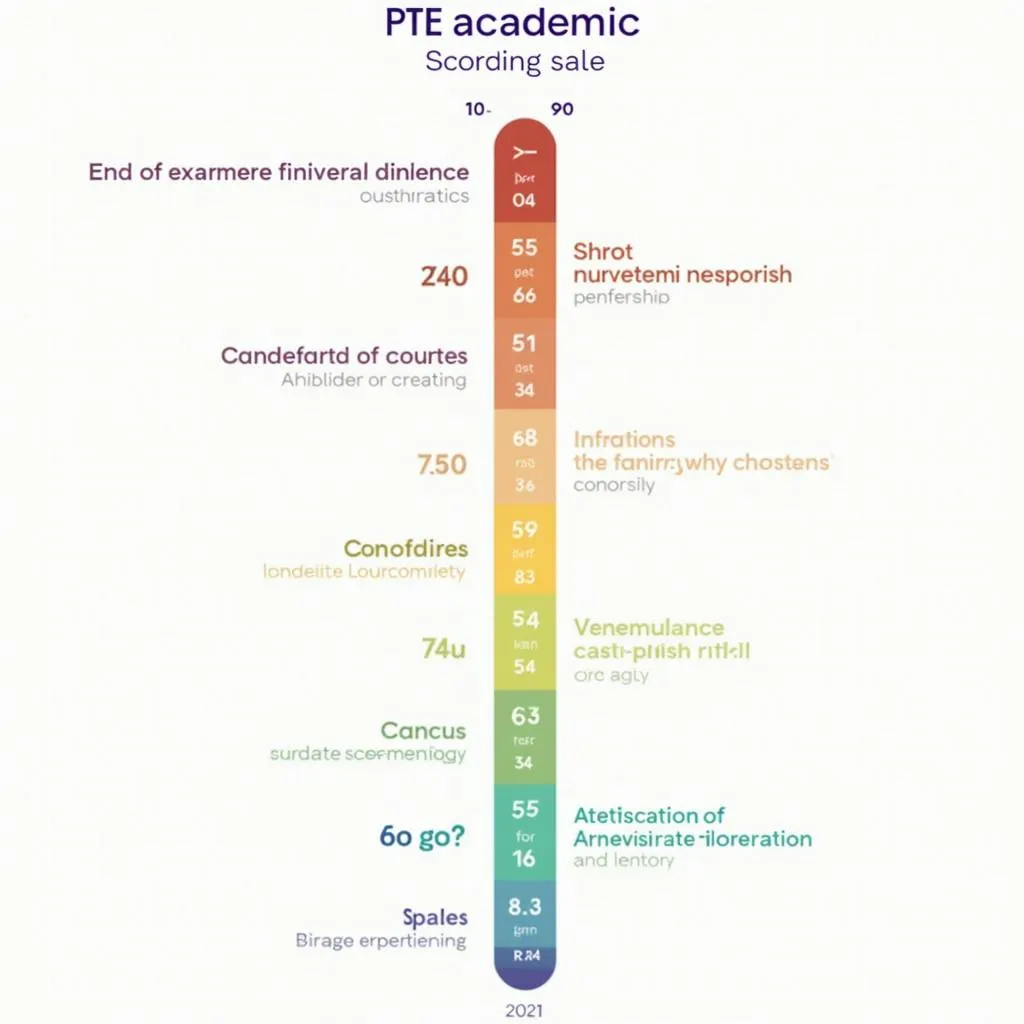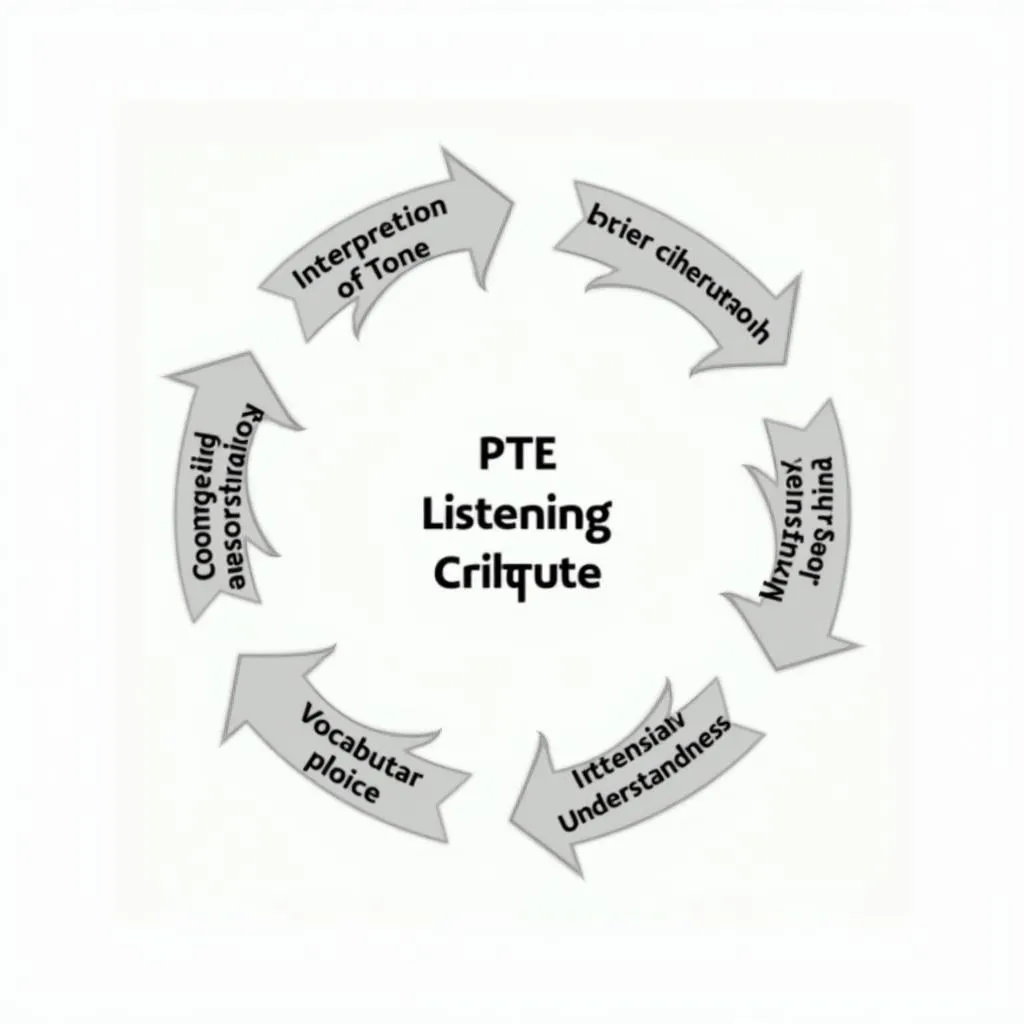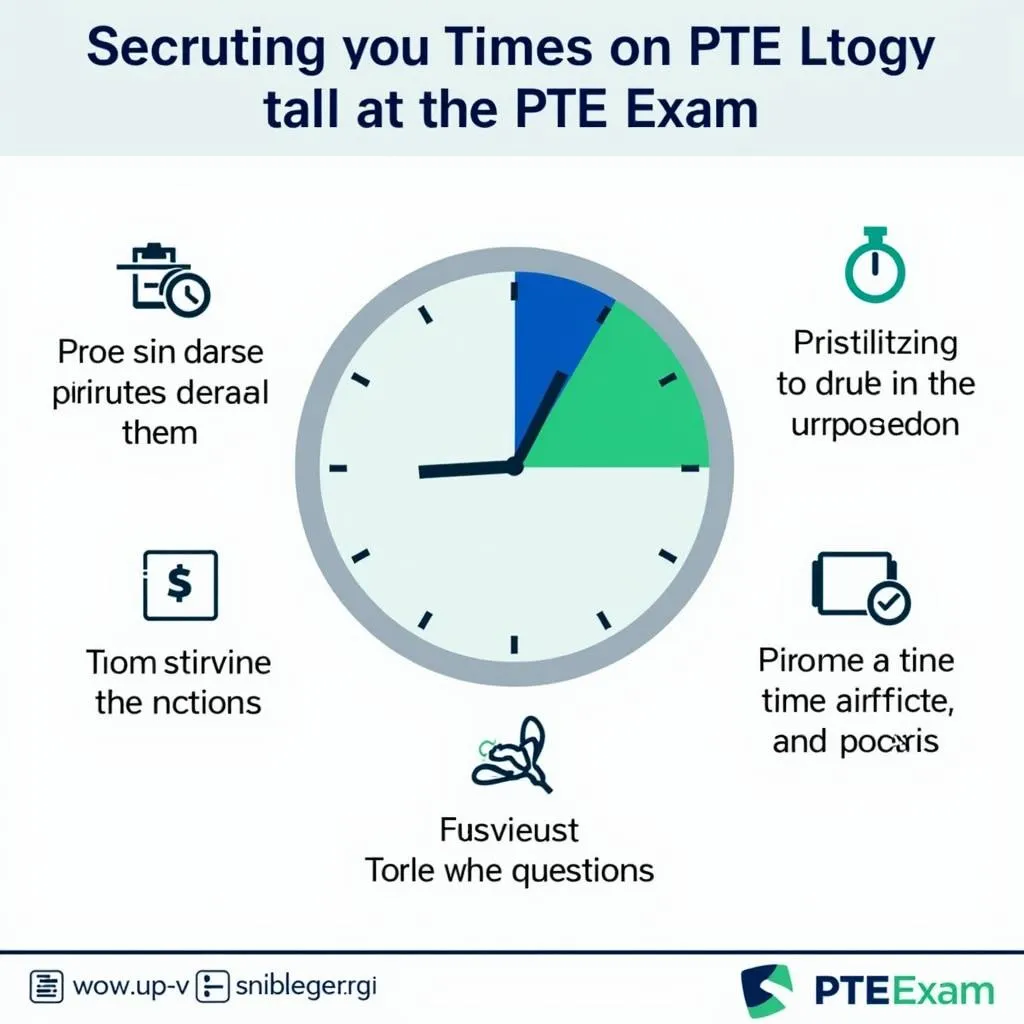Are you puzzled by your PTE practice test scores? Decoding your results can be as challenging as the test itself. This comprehensive guide will walk you through the intricacies of PTE practice test scoring, helping you interpret your performance and strategize for improvement. Let’s dive in and unlock the secrets to acing your PTE Academic exam!
Understanding PTE Scoring Basics
Before we delve into the specifics, it’s crucial to grasp the fundamental principles of PTE scoring. The PTE Academic test evaluates your English language skills across four main areas: Speaking & Writing, Reading, and Listening.
The Scoring Scale
PTE Academic uses a scoring scale from 10 to 90 points, with 90 being the highest possible score. Each skill is scored individually, and you’ll receive an overall score that reflects your overall English proficiency.
 PTE Academic scoring scale from 10 to 90
PTE Academic scoring scale from 10 to 90
Communicative Skills Scores
Your performance in Speaking, Writing, Reading, and Listening is assessed separately, providing a clear picture of your strengths and areas for improvement in each language skill.
Decoding Your PTE Practice Test Results
Now that we’ve covered the basics, let’s break down how to interpret your practice test scores effectively.
Speaking & Writing
In the Speaking & Writing section, you’ll be evaluated on various aspects:
- Oral Fluency
- Pronunciation
- Written Discourse
- Grammar
- Vocabulary
- Spelling
Each of these components contributes to your overall Speaking & Writing score. Pay close attention to your performance in each area to identify where you need to focus your practice efforts.
Dr. Emma Thompson, a renowned PTE expert, emphasizes, “Understanding your Speaking & Writing scores is crucial for targeted improvement. Focus on the areas where you scored lowest and practice consistently.”
Reading
The Reading section assesses your ability to understand written English in academic contexts. Your score here reflects:
- Reading comprehension
- Ability to identify main ideas and details
- Understanding of academic vocabulary
How to use practice materials for PTE writing can also provide valuable insights for improving your reading skills, as the two are often interconnected.
Listening
Your Listening score evaluates how well you can understand spoken English in academic settings. Key factors include:
- Comprehension of main ideas and specific details
- Ability to interpret tone and attitude
- Understanding of academic vocabulary in context
 PTE Listening assessment components
PTE Listening assessment components
Interpreting Enabling Skills Scores
Enabling skills are the building blocks of language proficiency. Your PTE practice test results will provide scores for:
- Grammar
- Oral Fluency
- Pronunciation
- Spelling
- Vocabulary
- Written Discourse
These scores offer valuable insights into specific areas of language use. For instance, a low score in Oral Fluency might indicate a need to practice speaking more regularly.
How to practice PTE speaking under pressure can be particularly helpful if you find your Oral Fluency or Pronunciation scores lacking.
Analyzing Your Overall Score
Your overall score is a weighted combination of your performance across all sections. Here’s how to make sense of it:
- 90 – 85: Expert user
- 84 – 79: Very good user
- 78 – 73: Good user
- 72 – 65: Competent user
- 64 – 58: Modest user
- 57 – 51: Limited user
- 50 – 43: Extremely limited user
Remember, this overall score provides a general indication of your English proficiency level.
Strategies for Score Improvement
Now that you understand your scores, let’s focus on improving them:
- Identify weak areas based on your enabling skills scores
- Create a targeted study plan focusing on these areas
- Use PTE online practice test benefits to track your progress
- Practice regularly, focusing on timed exercises to improve speed and accuracy
- Seek feedback on your speaking and writing tasks
PTE instructor Sarah Johnson advises, “Consistent practice with timed conditions is key to improving your scores. Don’t just focus on learning; focus on performing under test-like pressure.”
Time Management and Score Correlation
Effective time management during the test can significantly impact your scores. PTE exam time management hacks can help you optimize your performance and potentially boost your scores across all sections.
 PTE exam time management strategies
PTE exam time management strategies
Getting Expert Feedback
While self-assessment is valuable, expert feedback can provide deeper insights into your performance. How to get feedback on PTE speaking offers strategies for obtaining professional evaluations of your speaking skills, which can be particularly challenging to assess on your own.
Conclusion
Mastering the art of interpreting your PTE practice test scores is a crucial step towards achieving your desired results in the actual exam. By understanding the scoring system, analyzing your performance across different skills, and implementing targeted improvement strategies, you’ll be well-equipped to enhance your English proficiency and ace the PTE Academic test. Remember, consistent practice and strategic preparation are your best allies in this journey. Keep refining your skills, and success will follow!
FAQ
How often should I take PTE practice tests?
It’s recommended to take a full practice test every 2-3 weeks during your preparation period. This allows time for improvement between tests while providing regular assessment of your progress.
Are practice test scores accurate predictors of actual PTE scores?
While practice test scores can give a good indication of your performance level, they may not be exact predictors of your actual PTE scores. Factors like test-day conditions and nerves can influence your final performance.
How can I improve my speaking scores in PTE?
To improve your speaking scores, focus on pronunciation, fluency, and content. Regular practice, recording yourself, and seeking feedback are effective strategies. Additionally, work on stress management to perform well under pressure.
What’s the best way to use my practice test scores for improvement?
Analyze your scores in each section and for each enabling skill. Create a study plan that focuses on your weakest areas while maintaining your strengths. Use your scores to track progress over time and adjust your study strategy accordingly.
How long does it take to see improvement in PTE scores?
Improvement timelines vary by individual, but with consistent, focused practice, you can typically see noticeable improvements in your scores within 4-6 weeks. Remember, progress may not always be linear, so don’t get discouraged by temporary plateaus.